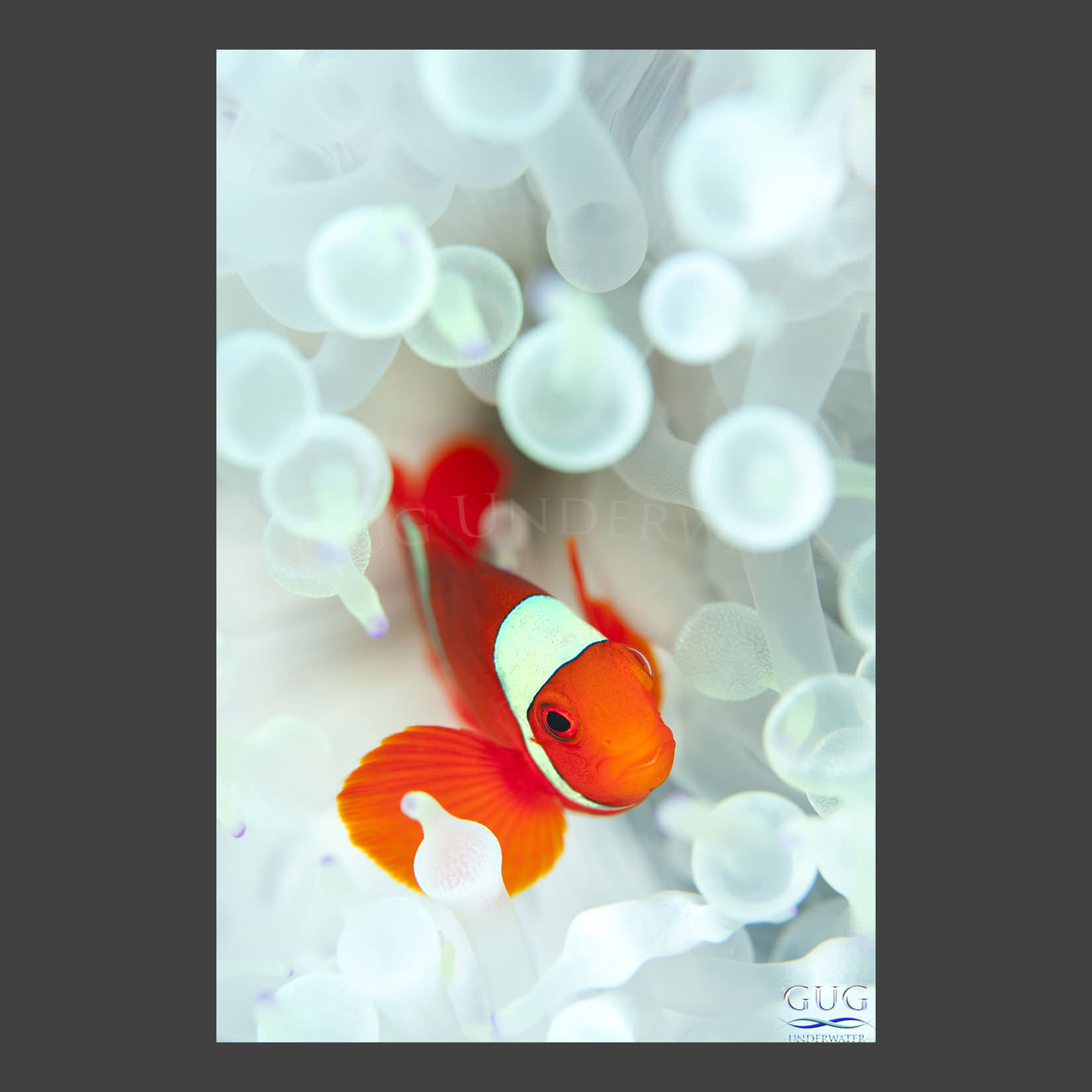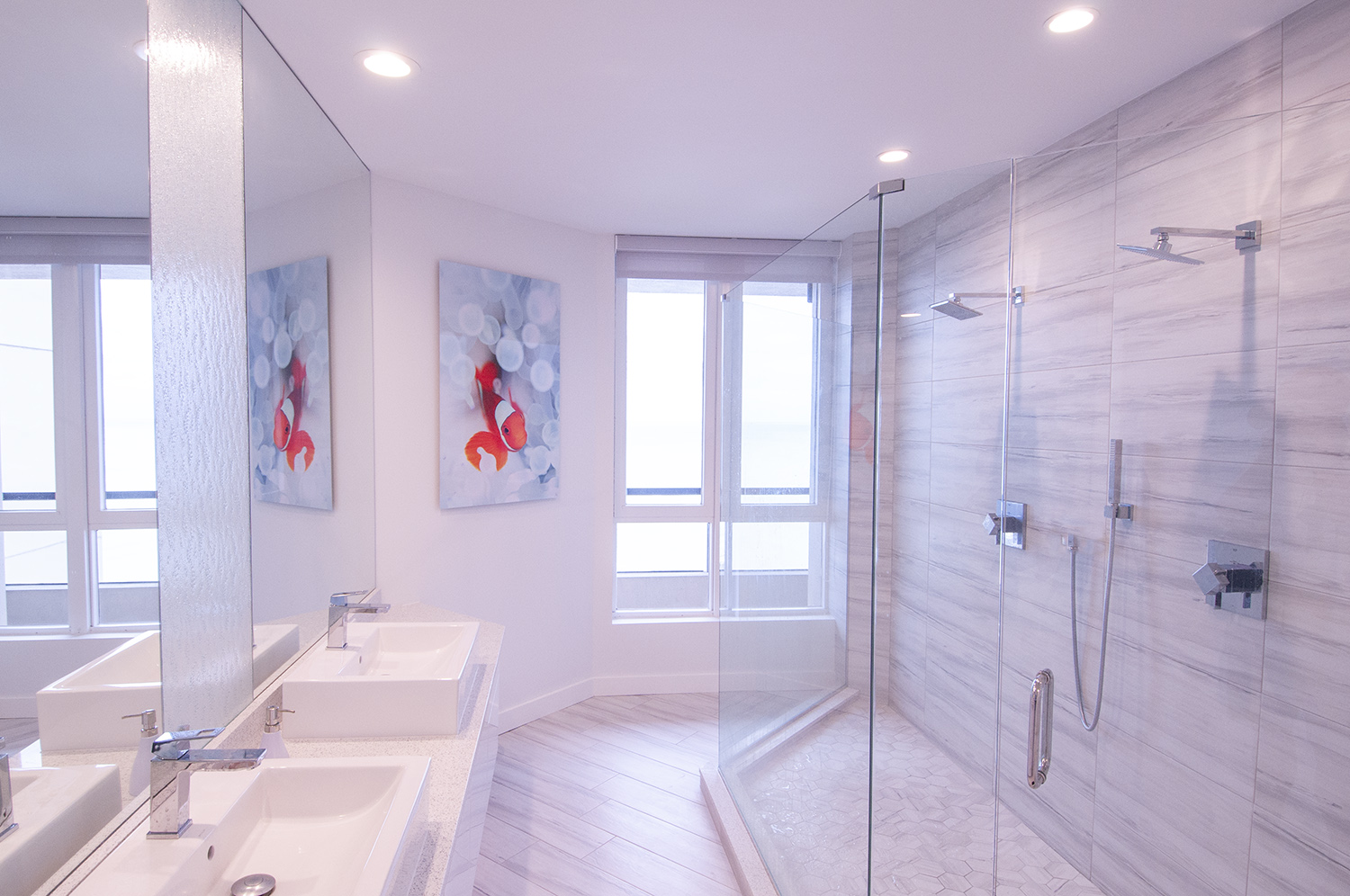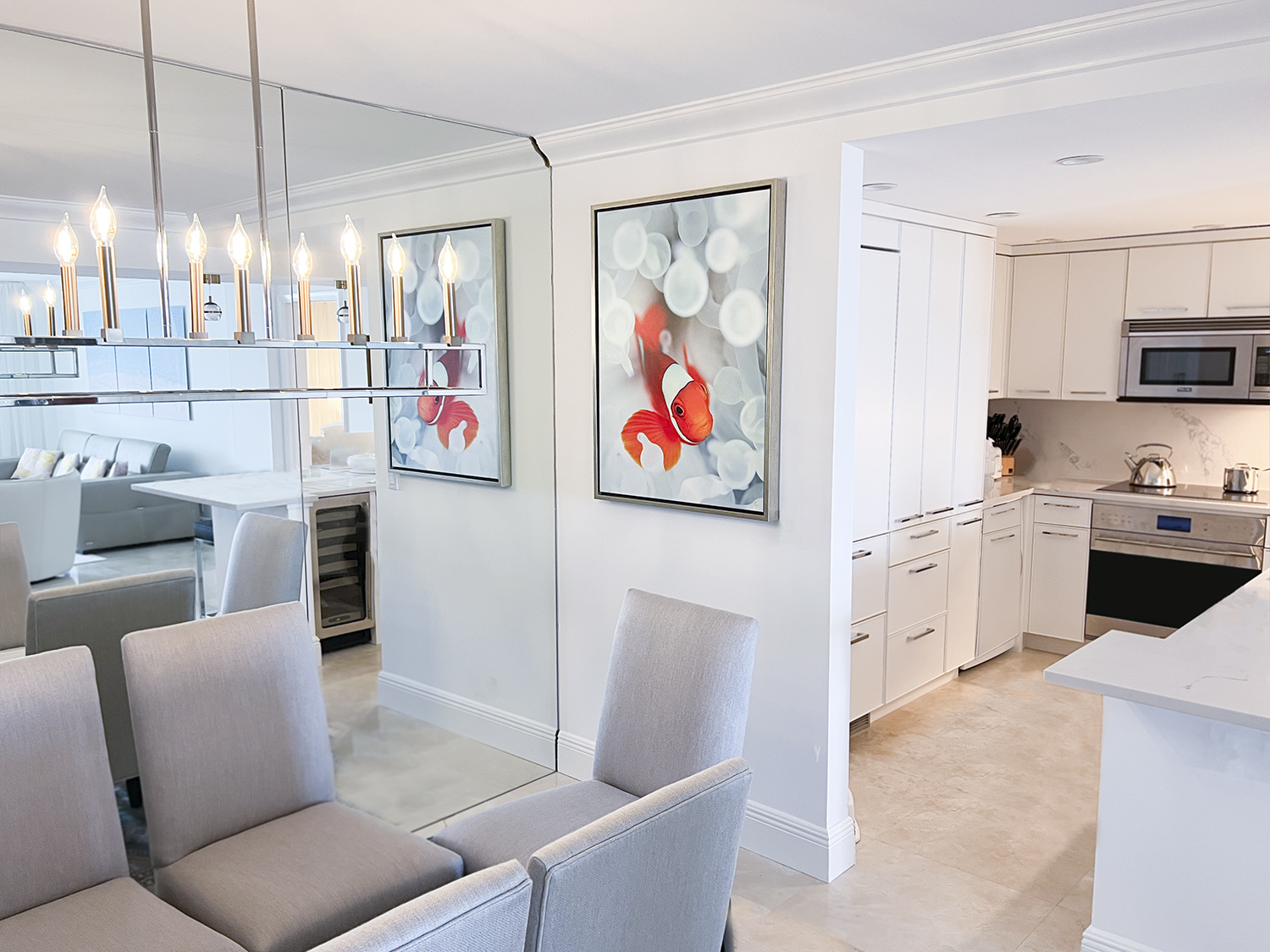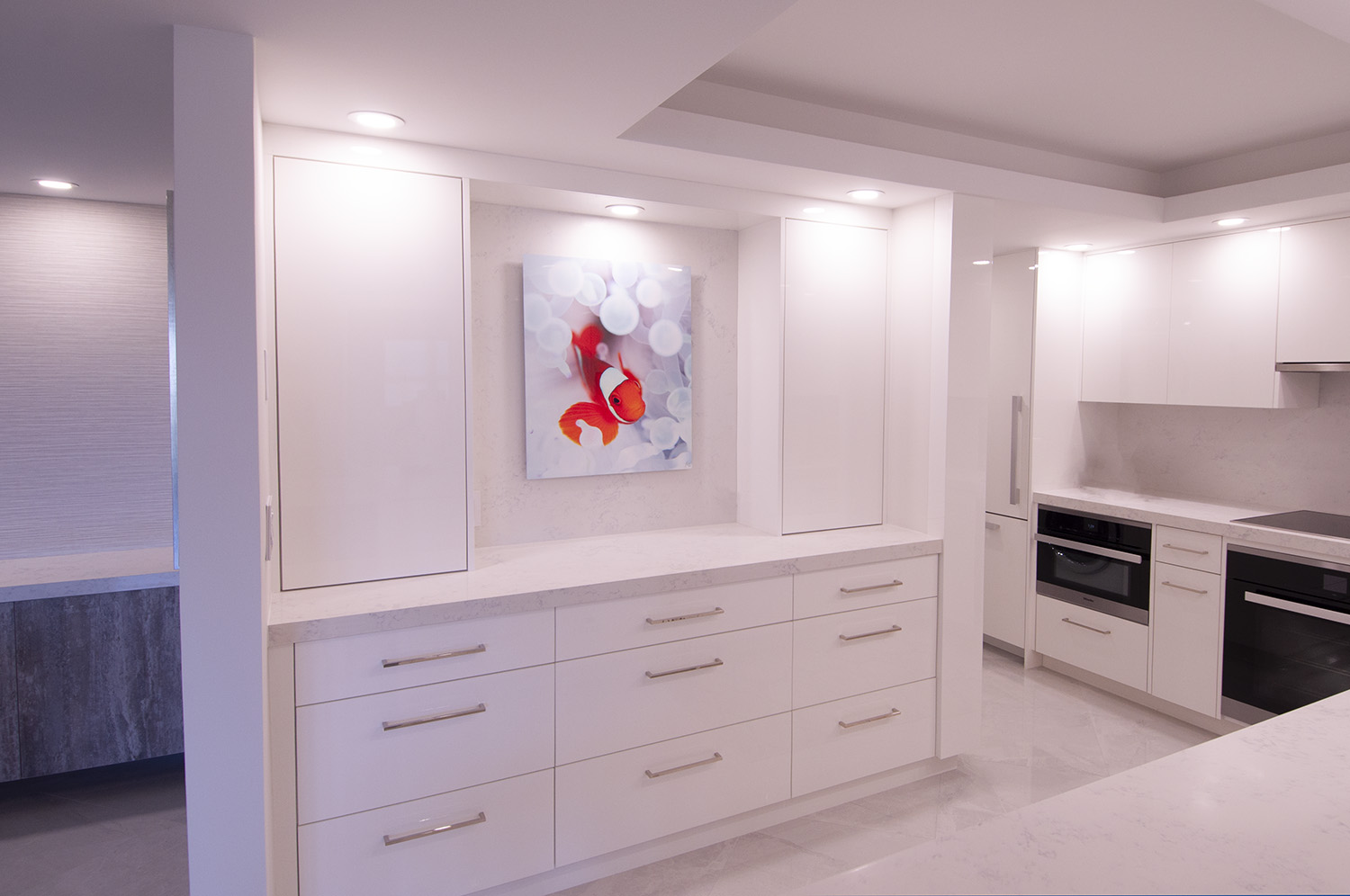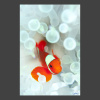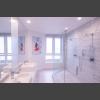Description
LOCATION: Papua New Guinea
STORY: For my entire career, I had been looking for the elusive white anemones that I had seen in a National Geographic magazine as a kid. I found the contrast between the reddish-orange of the clownfish and the ghostly background of the white anemone to be absolutely stunning. And it took over 15 years of searching to find them. This particular summer had been the warmest on record, with surface temperatures reaching 93-degrees. Fields of shallow stony coral were suffering from “coral bleaching” – a condition where, in response to elevated temperature, corals expel their symbiotic zooxanthellae (photosynthetic organisms living within the tissues of corals, anemone, and other marine animals). And to my surprise, of the thousands of bubble-tip anemones (Entacmaea quadricolor) in the region I witnessed eight that bleached out as well. There was practically no scientific study on anemone bleaching, so I began documenting the effects, and reporting results back to scientists back in the USA and Europe. Of primary interest was the increased care & feeding of the anemone by their clownfish – the primary reason that anemone’s can better withstand bleaching events than corals (who do not have a clownfish to care for them). And for this reason, there was a happy ending for this, and the other seven specimen that I was studying – after about two months, when the water began to cool to around 89-degrees, the anemone’s regrew their symbiotic zooxanthellae, and returned to their normal metallic-green color. And while documenting, I was of of course, obsessed with creating the beautiful image that had been engrained in my mind for the past 15 years. The color of this clownfish (more appropriately, a spine-cheek anemonefish, Premnas biaculeatus) was perfect, but I needed an artistic touch.
Without getting overly technical, there is a photographic technique called, “bokeh”, which, but using a wide aperture, creates a razor-thin plane of focus (depth of field). By using this technique, I was able to create a softer, dream-like effect to everything except the focal point – the eyes. With a depth of field that’s only a fraction of a millimeter, after firing thousands of shots over a 2-month period, I had countless shots with one eye in focus, but only about 10 with both eyes of this constantly hyperactive fish in focus. Could I have used a “normal” shot, and easily achieved a photo that was sharp? Of course – with my eyes closed! But after looking at tens of thousands of clownfish photos over the years, shot by myself and countless others around the world, I needed to create something different. Sometimes I question if these monumental efforts are worth the subtle differences in the images, but I feel that in a crowd of similar shots, there’s a exceptional difference between 99% and 100%, and its that last 1% that brings my 15-year vision to life.
PURCHASING THIS PRINT: Typically offered as a 3:2 ratio vertical anemone wall art, but it is somewhat flexible to be cropped into different ratios, including up to a 2:1 vertical, and we have also made it as a square for a few clients with beautiful results. If you need a custom crop, send us a photo of your wall so we can see your décor and space, and advise you with a Virtual Installation.

